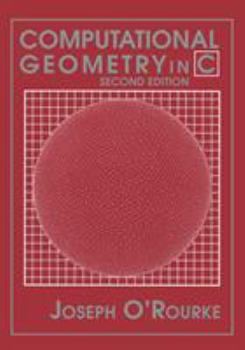Computational Geometry in C
Select Format
Select Condition 
Book Overview
Customer Reviews
Rated 4 starscollates useful computational geometric algorithms
If you are perhaps a graphics or robotics programmer, then you will often have need for computing various geometric forms. And the intersections of these forms. Rather than derive algorithms from scratch, you might want to first look here. O'Rourke has collated several useful sets of methods. Germane to two and three dimenions. Convex hulls are important enough that he devotes 2 chapters to these. While the somewhat related...
0Report
Rated 4 starsNice balance of theory with code
This book was pleasantly surprising: I had expected to see code presented with minimal motivation or discussion of the underlying ideas -- something of a "Computational Geometry for Dummies" sort of book. That's not the case at all. This is a bona fide textbook on the subject, suitable for an undergraduate course.It covers all of the the "classical" topics: convex hulls, line segment intersection, polygon triangulation,...
0Report
Rated 4 starsVery hepful
Anyone who is involved in areas such as computer graphics, computational radiology, robot vision, or visualization software should have a copy of this book. The author has done a fine job of introducing the most important algorithms in computational geometry, choosing the C language for their implementation. The choice of C might be somewhat dated now, since C++ is now beginning to dominate computational geometry, but readers...
0Report
Rated 5 starsmy rewiew
i think that these website is very.it has everything that i need. all of my books are from amazan.
0Report
Rated 5 starsA clear, concise text on fundamental Computational Geometry
O'Rourke's approach reflects the essence of both "Computational Geometry" and the "C language" --- concise yet profound. The book covers the core subjects of Computational Geometry: polygon partitioning, convex hulls, Voronoi diagrams / Delaunay triangulation, "arrangements" of lines, geometric searching, and motion planning.The book assumes some familiarity with the C language, but is very readable even for non-C programmers...
0Report














